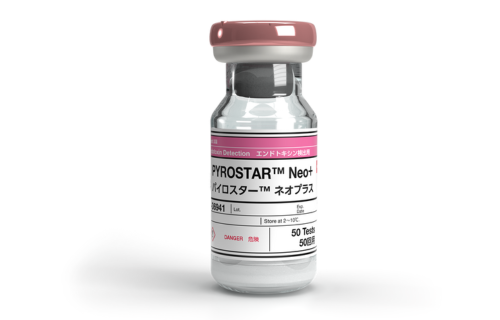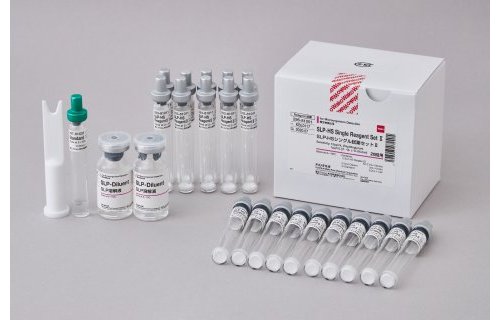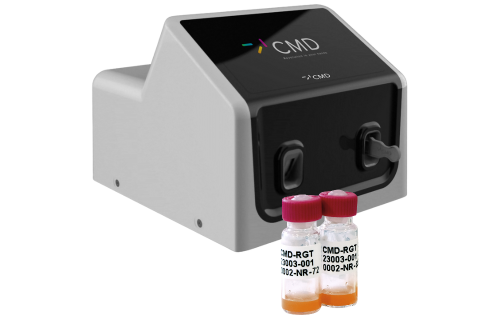Need for Rapid Endotoxin Detection Methods for Manufacturers of Radiopharmaceuticals
Radiopharmaceuticals are radioactive agents that are used for diagnostic or therapeutic purposes. These agents are introduced into the human body, serving a specific purpose, such as enhancing contrast[1]. Due to the direct injection of these chemicals into the human body, it becomes imperative to monitor them for any signs of pyrogen contamination.
Bacterial endotoxin is a highly powerful pyrogen that induces fever. Gram-negative bacteria (GNB) are the sole origin of it, with endotoxin accounting for approximately 75% of the GNB cell wall. Bacterial contamination in water and on surfaces typically includes GNB, resulting in the ubiquity of endotoxin.[2]
Pyrogen Testing
The purpose of conducting pyrogen testing is to maintain a safe and acceptable level of fever risk caused by a pharmaceutical injection. Even though it is possible to produce pyrogen-free equipment and drug storage containers, completely removing pyrogens from pharmaceutical preparations proves to be an insurmountable challenge, as these chemicals inherently contain trace amounts of pyrogens. At low levels of trace from these sources, usually measuring less than 0.2 endotoxin units/mL of injectate, do not have the potential to induce a fever response in patients[3].
In order to comply with FDA regulations, any pharmaceuticals intended for parenteral use in humans, whether radioactive or not, must undergo certification to ensure sterility and absence of pyrogens. These certifications must follow the Bacterial Endotoxin Test (BET) procedures specified in the United States Pharmacopoeia (USP <85>)[3].
Significance of LAL test in Radiopharmaceuticals
USP <85> includes a specific description of the LAL assay for endotoxin testing in the context of radiopharmaceuticals. The LAL test is conducted by reacting the blood of the Limulus, a horseshoe crab species, with bacterial endotoxin, resulting in the formation of a gel clot. The LAL test kits that are currently available include the turbidimetric, chromogenic and gel clot methods of this assay.
The LAL test is proven to be 5 times more sensitive than the Rabbit Test for pyrogen detection. With its increased sensitivity, the LAL Test is particularly desirable for testing drugs to be administered intrathecally. This is because endotoxin introduced directly into cerebral spinal fluid is at least 1,000 times more potent than if it is administered intravenously.[3]
USP <85> specifically sets the endotoxin limits for radiopharmaceuticals at 14 EU per dose if administered intrathecally or 175 EU per dose if administered by any other route.[4] Radiopharmaceuticals provide a unique challenge to endotoxin testing as they have ingredients that have extremely short usable lifespans. USP’s <825> guidance on radiopharmaceuticals outlines the need for rapid testing of these products. Specifically, the guidance requires the BET to be run before dispensing if all ingredients were not previously certified to be endotoxin free.[5] This time constraint does not allow for the gel clot technique’s 60 min result time. Rapid endotoxin detection techniques are therefore imperative in the successful testing of radiopharmaceuticals.
Modifications to LAL Assay for Radiopharmaceuticals
Due to the presence of chelating agents in 99mTc-labeled radiopharmaceuticals, there is a significant chance of false negative results. These agents reduce the concentration of free divalent calcium ions in the LAL reagent, leading to the inhibition of coagulin gel formation and potentially causing a false negative result.
The addition of a calcium chloride solution can be employed as a means to address the inhibition observed in an LAL assay employed for 99mTc-labeled radiopharmaceuticals and their cold kits that possess free SH, free COOH, or both of these groups.
Hospitals and central radio pharmacies now rely on this modified LAL test method adaptation to perform quality control tests on their radiopharmaceuticals and cold kits.[6]
To make the tests rapid without compromising accuracy, new developments have been implemented. The CMD αBET™ system is a newly developed technological advancement that complies with FDA regulations. It is a user-friendly and portable option for pyrogen testing, offering a faster alternative to traditional methods. The system utilizes the highly efficient LAL reagent for testing and has varying run times depending on the sample concentration, ranging from 3 minutes for a 10 EU/mL sample to 30 minutes for samples with 0.001 EU/mL.
Literature sources
- Munjal, A. and N. Gupta, Radiopharmaceuticals, in StatPearls. 2024, StatPearls Publishing Copyright © 2024, StatPearls Publishing LLC.: Treasure Island (FL) ineligible companies. Disclosure: Nishant Gupta declares no relevant financial relationships with ineligible companies.
- Cooper, J.F. and J.C.J.U.o.N.M. Hung, Health Sciences Center, College of Pharmacy, Bacterial endotoxin test and sterility test for radiopharmaceuticals. 2008. 14(5): p. 30-35.
- Karesh, S.M.J.J.o.n.m.t., Sterility and pyrogen testing of radiopharmaceuticals. 1989. 17(3): p. 156-159.
- <85> Bacterial endotoxin test, United States Pharmacopia.
- <825> Radiopharmaceuticals-preparation, compounding, dispensing, and repackaging, United States Pharmacopia.
- Mitra, A., et al., Limulus amebocyte lysate testing: adapting it for determination of bacterial endotoxin in 99mTc-labeled radiopharmaceuticals at a hospital radiopharmacy. J Nucl Med Technol, 2014. 42(4): p. 278-82.






